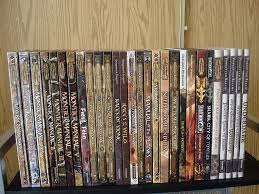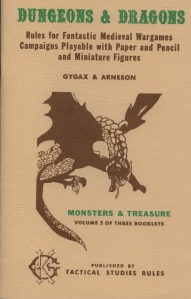What Am I Reading: Dungeon & Dragons Player’s Handbook, 5th edition
Part Five: Now, where were we?
I started to write a simple review of Dungeon & Dragons Player’s Handbook, 5th edition, but it grew into a series of blogs about the history of the game itself! Refer to my previous blogs for some of the terms if you are confused.
We’re sorry, really really sorry. We won’t do it again. Can we go back to being friends?
This is what WotC seems to be saying with its 5th edition. The Player’s Handbook is out now and the Dungeon Master’s Guide and Monster Manual are coming in the next few months.
When they realized that, good or bad system notwithstanding, their 4th edition was failing, they had to decide what to do. Should they scrap everything they have done? Yes. Should they just go back to 3.5? That wouldn’t be a bad idea, but Pathfinder has filled that niche now. Not only as a game, but their Pathfinder Societies has created gaming communities. Not only is Pathfinder a game, but it is something like a club – GMs and players can accumulate points as they play. They can get free stuff. It’s like the Boy Scouts or the Illuminati.
Let’s go way back, they may have said, go back to first edition – really make it rules light. No, there are plenty of companies that do that already. Pits and Perils (http://www.oldehouserules.com/), Labyrinth Lord (http://www.goblinoidgames.com/labyrinthlord.html), and (my favorite) Basic Fantasy Roleplaying (http://www.basicfantasy.org/).
Let’s keep the d20 system, WotC said, but make it lighter than Pathfinder. We’ll find our niche there. Something for the non-number crunchers. We’ll streamline 3.5 and they’ll forget all about 4th edition.
They’re off to a good start.
Now I can finally begin my review of Dungeon & Dragon Player’s Handbook for 5th Edition. It’s a beautiful book solidly bound – beautiful art, excellent layout and easy to navigate. I would expect nothing less from D&D – the bar is raised higher for them than, say, an upstart retro-clone. There I expect cheap … and am usually not disappointed.
The book starts with a lovely explanation of role playing – what it is and how it works. I usually skip over this part – the necessary intro to any RPG. It’s boring and repetitive to me (“…this is a movie in your mind … you help write the script…”), but if this is your first foray into tabletop role-playing, this has a solid intro.
The races are more or less back to the basics – Dwarf, Elf, Halfling, Human, Gnome, Half-Elf, Half-Orc. From 4th edition they kept the Dragonborn (the whiners who demand to be able to play a dragon as a player-character is too large a lobby group to ignore) and the Tiefling.
The classes are back to those listed in 1st edition AD&D with some Unearthed Arcana thrown in (although the revised names are used): barbarian, bard, cleric, druid, fighter, monk, paladin, ranger, rogue and wizard. They also added sorcerer and warlock.
Backgrounds are added – you could call these character kits harkening back to the class kits of 2nd edition. Did your character start his adulthood as a soldier, an urchin, a sage, an artisan? If you do, you have some ready-made skills, tools, and traits and flaws. I like the traits and flaws – it helps with role play, not roll play. It’s there for flare.
The usual equipment lists are canny and necessary for any game. I skimmed through that part.
The combat hearkens back to oulden times. Nothing new here – I mean that in a pleasant way.
Skills are down to 18 in number. Wow, 18 – and each are limited to certain classes. If you are proficient in a skill, you get +2. No slots, no purchases, +2. The idea of a proficiency bonus is a nice, slimmed-down touch. If you do anything well, if it is your proficiency, you get +2. Class or race attributes (Rogues use Dexterity, Warlocks use Charisma – smart move there. Unless you played a Paladin Charisma was always the low-roll dump of attributes) or skills – +2. Simple enough.
Feats are down to 42 in number. Still too much, but at least it’s lost some weight. As with 3.5 you only gain a feat every three levels. A player is given an interesting choice – every third level you can either pick a feat OR increase an attribute by one. Hmm … some of the feats are pretty tough – you can reroll damage and pick the higher roll, you can increase your hit points to the same number as twice your level. Some of these feats will be huge at higher levels!
A minor quibble: the XP needed to level is ridiculously low. 300 points to make second level? The XP value of creatures and monsters must have suffered quite a bit of deflation since 3.5…
WotC did a smart move by frothing up support and buzz for 5th edition through their Adventurer’s League: a structure of organized, public play sessions. Encounters is a short, weekly session at local game stores, Expeditions is for regional conventions – usually an all-afternoon event and Epic for major cons lasting days. For Encounters players meet at a game store and play a pre-set module sent to the DM directly from WotC. Both the DM and the players receive points for their play. Eventually, the gamers will run through the entire adventure path (another name for long module that will get you to the highest levels). Pathfinder has the same thing with their Pathfinder Society. The exact same thing. I wish WotC luck in this – but it seems no business gets ahead by copying its competitors. Pathfinder copied 3.5, true, but only after WotC abandoned it.
The expunging of all things 4th edition is underway. The gaming community is starting to forgive them.
I’m too far away from any game store to do the Adventure group thing. And with my baby girl I doubt my wife would let me run off once a week to play anyway. Maybe when she is old enough to entertain herself.
To say that 5th edition is weighed down by what has gone on before is an understatement. But they should look on it as a legacy, not a burden. Embrace and respect the past. But note the future. Right now they are copying Pathfinder – with their lighter version of the rules and their Society-like Adventure teams. When you are in a parade – you never march behind the horses. But D&D is in a position it had never been in before – an upstart follower instead of a leader. They may still claim to be the premier world leader of RPGs, but the Sumerians were the premier world leader of … um … world leaders. You see where Sumer is now … or isn’t. As with any upstart, they’ll have to fight their way up. They may never make it back on top, but at least they are on their way to giving it a good try!
And I think they are on their way. If Player’s Handbook is any indication, they can create their own niche of a Rules-Light d20 game. They are already past the point of being completely “rules light” with their skills and feats – diminished as those are. Leave that to the retro-clones (and I hate that phrase as being too negative, but it seems to have caught on without a taint. Those companies use the phrase as a badge of honor).
I’m already looking forward to playing a Tiefling Warlock with the Great Old One patron…
Happy gaming!
Copyright 2014 Michael Curry
















